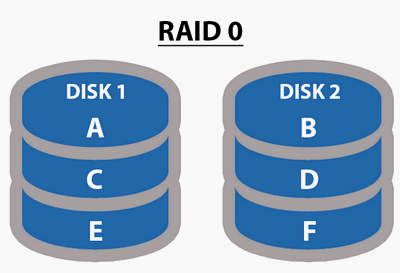Two months ago, Micron made a big move; it announced X100 SSD, which then becomes the world’s fastest solid state drive. Like other fastest consumer PCI Express 4.0 NVMe-based solid state drives like Corsair MP600 and Gigabyte Aorus NVMe Gen4 SSD, the Micron X100 is able to break the 5GB/s speed barrier.
Previously, the PM1733, one of Samsung’s enterprise-level PCIe 4.0 NVMe SSD, has the fastest speed (8GB/s with 1.5M IOPS). It was the best choice for the speed seeker until Micron announced its new X100 SSD.
Please go to the home page to get solutions for SSD protection & recovery.
Micron Announced A 3D XPoint SSD
Adopting the 3D XPoint memory technology, Micron X100 becomes the world’s fastest SSD. It can hit 9GB/s reads and writes and the IOPS (Input/Output Operations Per Second) is up to 2.5 million. What’s more, this 3D XPoint SSD has ultra-low latency – 8 μs.
In summary, there are 6 main highlights of this world’s fastest SSD.
- High-performance local storage: as I have mentioned, the IOPS of Micron X100 is up to 2.5 million. To tell the truth, it is more than three times faster than that of the competitive SSDs on the market.
- High-performance in small size storage: it’s not necessary to provide excessive storage for performance.
- Ultra-low latency: the consistent read-write latency of X100 is about 11 times better than that of NAND SSDs.
- Application acceleration: the end-user experience for some applications with ordinary data center workloads will be improved two to four times.
- Leading bandwidth: the read, write and mixed bandwidth of Micron X100 is more than 9GB/s; it is three times faster than that offered by competitive NAND.
- Easy-to-use: the standard NVMe interface has been built into this 3D XPoint SSD, so you’re not required to change the software to enjoy the full benefits.

Low Latency
In fact, the new Micron X100 is a new PCIE 3.0 x 16 device, which is ultra-fast with pretty low latency – about 8 microseconds of latency. How impressive is this? To be specific, the latency is even faster than that of Intel’s Optane SSDs – which is claimed to be 10 microseconds (guess you may want to learn more about Intel Optane Memory M15).
In terms of the sequential and random performance, Micron X100 is also better than any of the Intel’s competing Optane drives.
The PCIe SSD Market Share Will Be Equal To SATA Drive Market Share!
High-performance Storage & Intensive Memory
According to Micron, the new 3D XPoint SSD is mainly designed for both high-performance storage and memory-intensive data center programs. Undeniably, the 3D XPoint memory technology has many advantages when compared to NAND flash memory
3D XPoint memory vs. NAND flash memory:
- Performance: first of all, as one kind of the non-volatile memory type, 3D XPoint offers much better performance than the NAND flash memory. The access time of 3D XPoint is similar to DRAM, while the density potential of it is about 10x larger than DRAM.
- Endurance: the endurance of 3D XPoint memory is obviously higher than that of the traditional NAND flash memory. However, these two memory types have similar scalability in terms of density and capacity. The endurance of 3D XPoint is 1000x better than NAND.
Speed: back to a few years ago, Micron and Intel announced together that 3D XPoint memory will be 1000x faster than NAND memory, at the chip level.
Development & Trend
Early in 2005, Micron worked with Intel first to form the IM Flash for the sake of developing breakthrough storage technologies. They thought of 3D XPoint at that time since it has good performance in terms of density, durability, and latency; beside, it is somewhere between RAM and NAND. Then, Intel released its Optane SSDs, which is too expensive to afford. However, with the step in of Micron, it becomes easier to announce XPoint.
Competition seems to be the only thing that X100 is lacking. On current market, the PCIe 4.0 SSDs are provided with the quickest speed (it’s about about 5 GB/s). Though you can further increase the speed to about 15 GB/s by creating RAID 0, it’s not a good choice. Why? The biggest reason is RAID 0 is not as stable as normal SSDs. Till now, the Intel’s Optane 905P is a strong competitor, while the Samsung PM1733 and PM1735 seem to be the strongest competitors.

Best Method of Data Recovery from RAID | Easy Step By Step Guide!